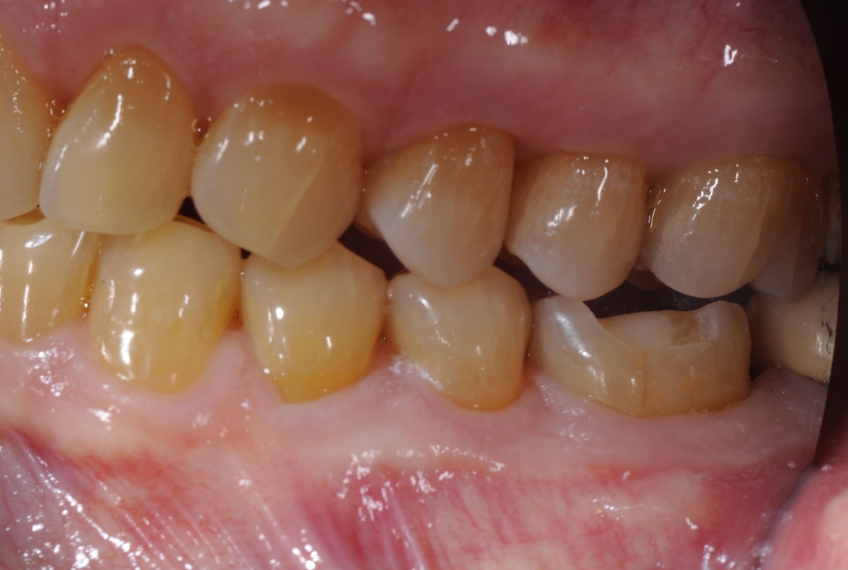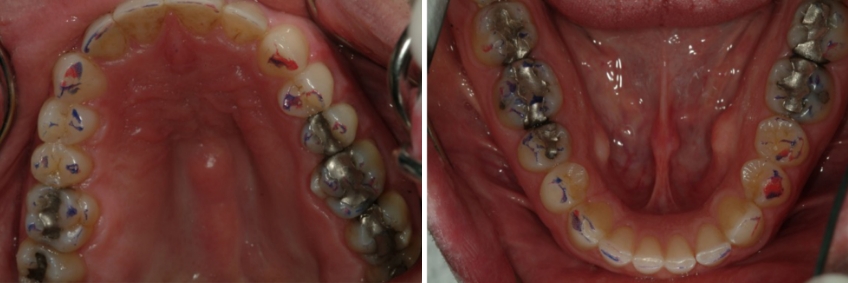The Significance of Centric Relation When Preparing Posterior Crowns
Single-unit posterior crowns are considered the bread and butter of a restorative dental practice. Molar cuspal coverage is so routine that you may jokingly refer to the process as doing it with your eyes closed. Still, the significance of centric relation can at times be overlooked.
There are circumstances where the bottom may drop out if proper attention and action are not considered and applied. This situation will likely happen to all of us at some point. And when it happens, it will certainly catch your attention and cause you to open your eyes to the reality that posterior indirect coverage is not always as straightforward or routine as it seems.
As Restorative Advisor for the General Practice Residency (GPR) at Loyola Hospital in Maywood, IL, I often receive questions from former residents who encounter challenges in their practice.
Correspondence About Second Molar Crown Prep
Hi Dr. Bonk,
I hope all is well. I just had a question from a colleague on a topic I remember you speaking about during our GPR lectures last year. The question was, “Have we ever been in a situation where we are prepping a tooth for a crown, usually a second molar, and feel like we’re not getting any occlusal reduction? I think he called it ‘incomplete condylar seating?’”
He was curious about how to deal with, assess for, or avoid it. As I said, I remember us going over it, but I can’t remember the exact situation, and I thought I could reach out to you for an answer. Thanks in advance.
Shelby
Response About the Significance of Centric Relation
Dear Shelby,
“Yes, your colleague is correct in his assumption that the loss of vertical dimension is likely due to incomplete condylar seating. In certain circumstances, this sudden verticalization of the condyle leads to a loss of preparation space. Let me outline the scenario to give you a better perspective.

You may remember that in our residency workshop discussions, we talked about the significance of centric relation (CR) as the most superior positioning of the condyle within the articular space.
No further vertical condylar movement can occur if the condyles are seated and functioning in this position. Thus, rotation is the only movement that can occur from this position. CR is a bone-braced position, and the positioning happens because muscles and ligaments coordinate to allow access to CR within the patient’s envelope of function.
However, most people do not function in CR. Their maximum intercuspal position (MIP) is typically down and forward of the most seated condylar position.

The sudden loss of vertical space problem occurs typically in second molar crown preparations. Suppose the condylar position is not determined before reducing the tooth’s cusp height (vertical). In that case, the condyles may be the muscles and ligaments responsible for maintaining MIP relaxation. This relaxation changes the vertical dimension, corresponding to losing the inter-occlusal space that was just created. It’s a bad day when this happens.
These vertical-holding teeth are key to the patient’s occlusal awareness. They (the patient’s proprioception) depend upon these key contacts as “the memory teeth,” relative to how their teeth fit together.
If this tooth contact is removed, the change can frustrate patients. They will feel like their bite no longer works or doesn’t feel right, and they struggle with mastication and overall comfort with their teeth. If this situation should occur, correction and recovery involve multiple steps and can be challenging.”
Complete Occlusal Equilibration to Regain Bite Awareness
“From my experience, yes, I’ve experienced days like this; start by providing the patient an occlusal guard adjusted with even contacts in centric relation. Once the muscles are comfortable and relaxed, the patient can regain awareness of what an even and balanced bite feels like.
Complete occlusal equilibration (without the guard) will be necessary to regain bite awareness. It takes time and patience on everyone’s part. Patients respond and correct differently. The best thing is not to have the situation happen.

To prevent this catastrophe, evaluating the patient’s first point of contact in CR before you begin treatment and tooth preparation is essential. Use one of the techniques we talked about in our workshops to find the first point of contact:
- Bi-manual mandibular guidance or
- Leaf gauge or Lucia jig
The rule of thumb is that if the first point of contact is greater than 1.0 mm from the second point of contact, an entire mouth (occlusal) equilibration should be performed before beginning the crown preparation.
If the second tooth contact is approximately 1.0 mm, it is generally safe to proceed with cuspal reduction without prior equilibration. Usually, this first contact is on the second molars, but it does not have to be. It may be a tooth more anterior. The key is to check first!
The problem of losing vertical comes from situations where the second tooth to contact in CR is 2.0-3.0 mm, or more (in vertical closure) from the first point of contact. This generally means trouble. If the patient is equilibrated first to gain even tooth contacts, the issue is solved, and the crown preparation will not lead to a challenging outcome.
I hope this explanation is helpful to you. Believe me, it’s not a situation you want to get into. It is best to check the contact of centric relations and know the potential hazards beforehand. If you have further questions, let me know.”
Jeff Bonk
SPEAR campus
Hands-On Learning in Spear Workshops
With enhanced safety and sterilization measures in place, the Spear Campus is now reopened for hands-on clinical CE workshops. As you consider a trip to Scottsdale, please visit our campus page for more details, including information on instructors, CE curricula and dates that will work for your schedule.

By: Jeffrey Bonk
Date: October 6, 2022
Featured Digest articles
Insights and advice from Spear Faculty and industry experts


